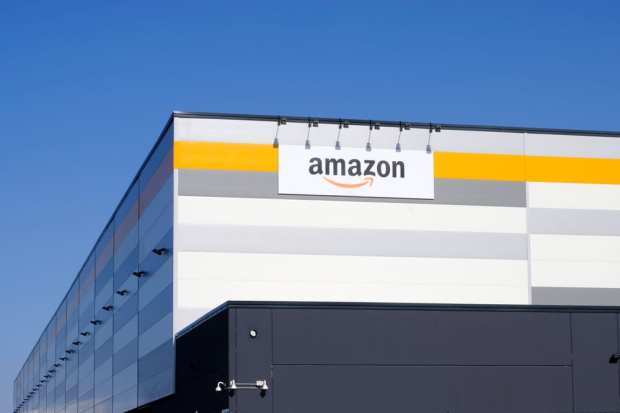Supply Chain Compliance In The Amazon Era

In the world of supply chain compliance, complex regulatory requirements like Know Your Customer (KYC) and anti-money laundering (AML) probably come to mind. There are also the challenges of supplier management, tax legislation, cross-border compliance, worker protection and more.
However, in the Amazon age, where it’s now easier than ever to get a product out onto the eCommerce stage, supply chain compliance can take on a whole new meaning. That’s because companies like Amazon and Walmart have their own stringent, unique requirements in supply chain management for manufacturers that deliver to their warehouses, from the types of packaging and labeling used to shipping notifications.
Failure to comply with those requirements can be costly, and eat into already-thin margins for those manufacturers. Even worse, according to Justin Leigh, CEO of eCommerce service provider Ideoclick, many manufacturers fail to even realize they’re losing money because of supply chain defects.
“They aren’t even always noticed,” he told PYMNTS in an interview. “We’ll look back at three to four years of deductions and chargebacks a client has incurred, and, typically, we’ll find very large dollars in there — sometimes millions of dollars. … That definitely shows you how much this has gone unnoticed from manufacturers.”
Those chargebacks issued by Amazon can be a silent killer to cash flow for manufacturers, and the best way to address the issue is, of course, to mitigate any supply chain defects that would incur such costs in the first place. However, that can be a painful process for many businesses, as readjusting supply chain practices is a similarly expensive initiative. According to Leigh, in some cases, those chargebacks can be reimbursed or negotiated down. In other instances, it’s more cost-effective to simply pay the chargeback, as it would be more expensive to change a supply chain process.
What businesses cannot afford to do, however, is ignore the problem — which, Leigh added, is growing in scale. It’s forced new conversations with some manufacturers over whether it’s even worth it to do business with eCommerce giants like Amazon in the first place.
Today in the U.S., though, working with Amazon is often necessary to compete.
“[Amazon] requires integration up and down the supply chain. Everything has to be designed with Amazon in mind to be successful,” he said.
That may be disheartening to manufacturers getting burned by some of these charges, but, as Leigh explained, the chargebacks and supply chain policies don’t exist for the sole purpose of squeezing manufacturers. Rather, they’re intended to streamline the supply chain as much as possible, making processes more efficient and reducing costs for end buyers.
Take, for example, Amazon’s Ships In Own Container (SIOC) strategy. It requires manufacturers to adhere to strict guidelines on product packaging to allow Amazon to receive a product at its fulfillment center and ship it directly to the buyer, without having to open the box or repackage the product. Failure to adhere to that requirement could mean a five-dollar chargeback per item, depending on its size, Leigh said.
There is also Amazon’s PO On-Time Accuracy policy that went into effect in 2017, which issues chargebacks to manufacturers if more than 10 percent of their products do not arrive at Amazon within the window noted on the purchase order.
While these requirements may seem like a hassle for many manufacturers, their purpose is to save time and heighten supply chain efficiency. They’re part of dozens of supply chain requirements that all have the same goal in mind, Leigh explained.
“Everything Amazon does is designed to reduce costs between manufacturing and consumption,” he said. “And any cost we can remove between manufacturer and end-user consumption is value that we can give back to our client[s]. Chargebacks are designed to do that, but the real challenge to manufacturers is that, while it might reduce Amazon’s cost to get the product to the customer, manufacturers are incurring a lot of internal costs to comply.”
Amazon may be the industry giant, but Leigh said such supply chain requirements and penalties are on the rise across the board. (Walmart enacted its On Time In Full program in 2017, for example, which introduced harsher penalties for delayed or incomplete deliveries.)
For manufacturers that are able to gain visibility into their supply chain compliance performance, and mitigate the risk of chargebacks, their success will grow as a result. Understanding the root cause of what led to a supply chain defect in the first place will not only, ultimately, avoid a chargeback, but will likely improve the bottom line.
Whether working with Amazon or someone else, supply chain efficiency is the key to successful operations. The focus is on Amazon today, simply because it is at the forefront of this trend, Leigh noted. Yet, as supply chains embrace automation, artificial intelligence and other technologies designed to reduce costs as much as possible, manufacturers using these eCommerce platforms to grow will continue to face this challenge.
“It’s really hard to deliver packages to individual consumers. To deliver a 20-pound bag of cat litter, and be competitive with a brick-and-mortar store, you have to squeeze every last penny and dollar out of the delivery mechanism as you can,” Leigh said. “And the marketplaces that win will be the ones that do that the best —all the way down the supply chain.”
